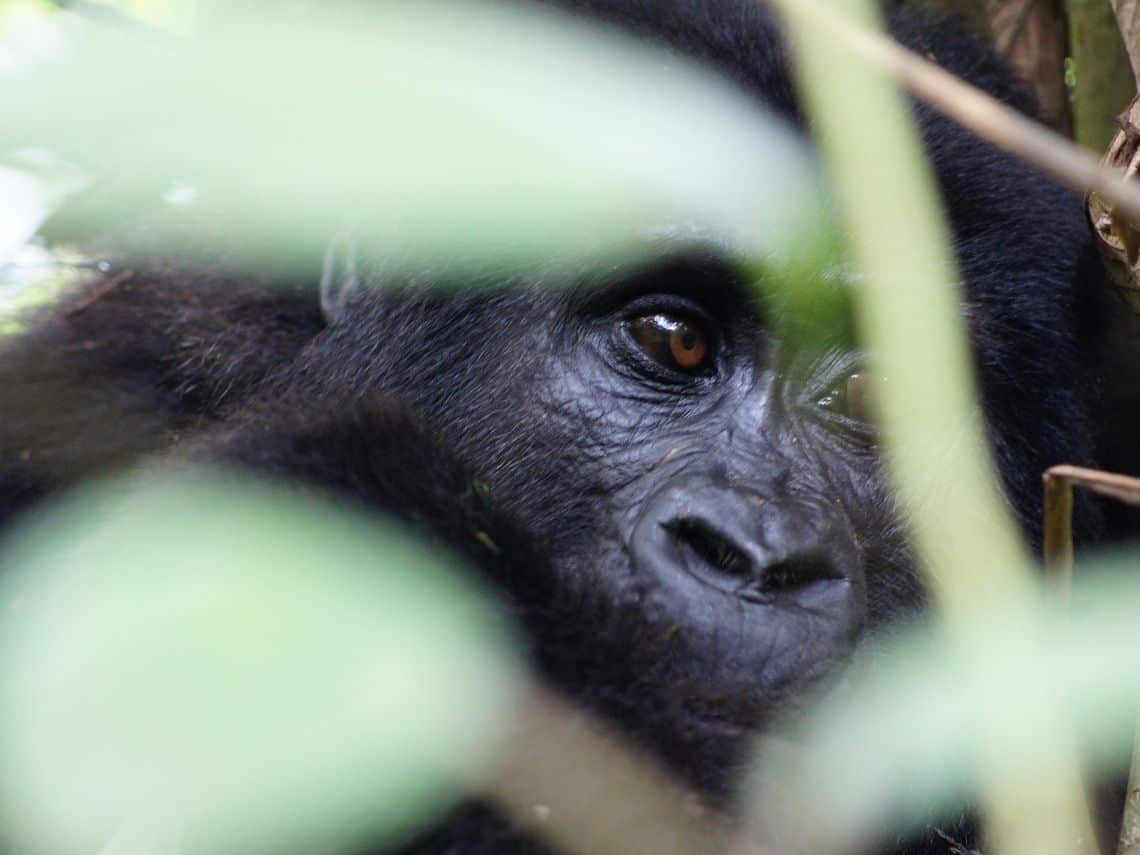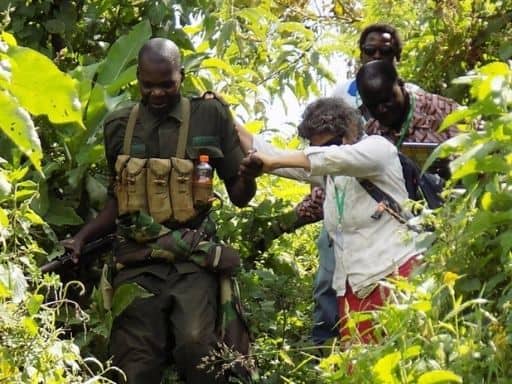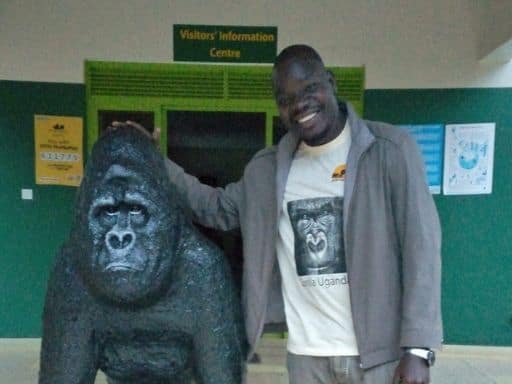Is Gorilla Trekking Worth the Money? Everything You Need To Know About Gorilla Trekking In Uganda

If you are questioning if gorilla trekking is worth the money, this guide is for you.
Uganda is home to the last stretches of rainforests mountain gorillas. Though human encroachment and poaching continue to threaten their survival, their numbers have gradually increased thanks to conservation efforts by local communities, sanctuaries, and wildlife researchers.
Many of the porters who guide trekkers on their gorilla tracking journey are former poachers who now earn a decent livelihood safeguarding what they once hunted. Few things in the world can match the experience of a face-to-face encounter with mountain gorillas in Uganda’s parks.
Here, we break down all you need to know about gorilla trekking, what to expect, and the best time to visit Uganda’s gorilla parks.
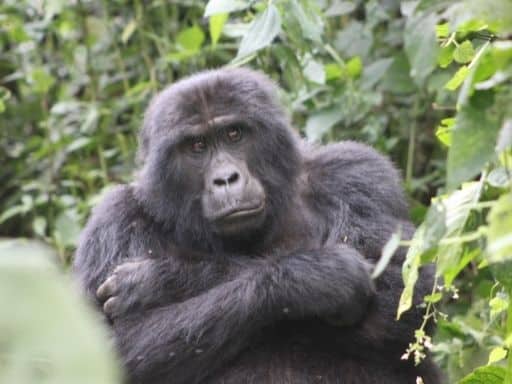
Why Go Gorilla Trekking
Mountain gorillas can survive nowhere else apart from their natural habitats. These magnificent primates are not zoo-friendly animals meaning the only way to encounter them is by trekking through their natural habitats. Uganda’s Bwindi impenetrable forest park and the Volcanoes National Park in Rwanda are the top destinations for gorilla trekking in Africa.
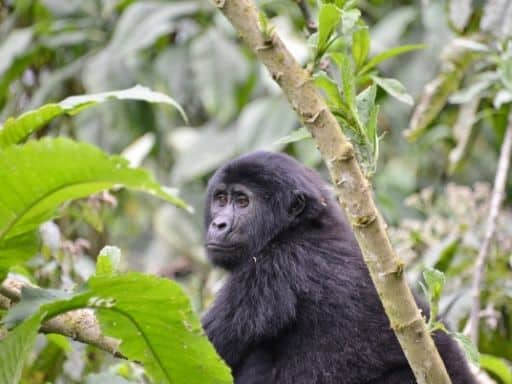
In the last few decades, mountain gorilla populations in Uganda, Rwanda, and DRC have dwindled dramatically due to human encroachment and poaching. Today, the mountain gorilla is still critically endangered, and researchers estimate that only 900 of them remain in the protected sanctuaries. Illegal logging and bushmeat hunting have been devastating to the western lowland gorilla.
However, community initiatives and gorilla trekking tourism help raise awareness about protecting the gorilla’s natural habitat. More importantly, Gorilla trekking supports neighboring communities by creating jobs and sponsoring community initiates using park proceeds. The cross-collaboration between locals, researchers, and the sanctuaries allows communities to value conservation efforts.
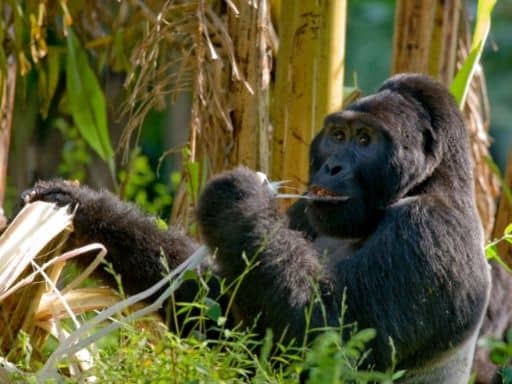
Gorilla Trekking Uganda vs. Rwanda
Gorilla trekking in Uganda vs. Rwanda is a topic that is often debated among travelers. There are many factors to consider when making the decision of which country to visit for this experience. Here, we will discuss some of the key reasons why Uganda is the better choice for gorilla trekking.
First and foremost, Uganda is home to the critically endangered mountain gorillas. These gorillas are only found in the countries of Rwanda, Uganda, and Congo. Of these three countries, Uganda is the only one with a population of mountain gorillas that is stable or increasing. In fact, the mountain gorilla population in Uganda has increased by 26% since 2006! This is thanks to the conservation efforts of groups like the Ugandan Wildlife Authority and The Gorilla Doctors.
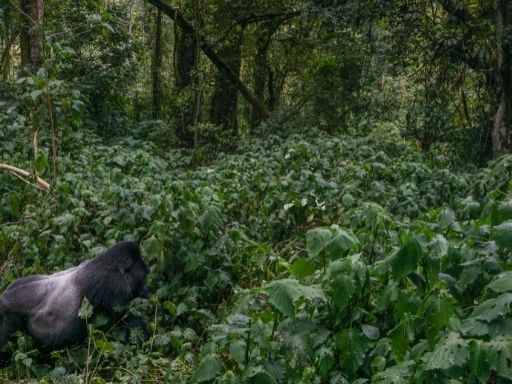
In addition to having a stable population of mountain gorillas, Uganda also offers a greater chance of seeing these gorillas in the wild. Rwanda’s Volcanoes National Park is the only place in the world where you can see mountain gorillas in their natural habitat. However, the park is often crowded with tourists which can make it difficult to get close to the gorillas.
In contrast, Uganda’s Bwindi Impenetrable Forest is much less crowded and provides a more intimate experience with the mountain gorillas. The forest is also home to other wildlife such as chimpanzees, elephants, and leopards. So, not only will you have a better chance of seeing mountain gorillas in Uganda, but you’ll also have the opportunity to see other animals as well.
When it comes down to it, Uganda is the better choice for gorilla trekking for several reasons. With a stable or increasing mountain gorilla population and less crowded national parks, you’re more likely to have a successful and enjoyable trip in Uganda.
How Difficult is Gorilla Trekking?
Tracking mountain gorilla groups in the mountainous Bwindi rainforests entails snaking through steep and narrow footpaths. The scouts typically take the lead during the excursion creating paths through dense foliage with the help of a machete. The scouts place the trekkers into small groups of eight people or fewer for better coordination when trekking through the forests.
Though there’ll be plenty of breaks in between, you’ll have to be at least walking fit and well equipped with the right gear to make the most out of your trek. We recommend carrying a good pair of broken-in boots for maximum ankle protection, knee-high trekking gaiters, and thick double-layered socks with comfortable cotton linings.
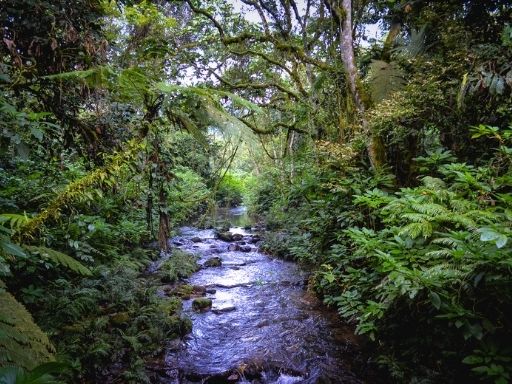
Will I See Gorillas During The Trip?
Wildlife reserves officers, researchers, and trekkers regularly monitor the movements of gorilla communities within the wildlife parks. Moreover, the experienced guides are well equipped to track the different gorilla families within the forest expanse. With that said, there’s a 90 percent chance of seeing them during the trek.
Sometimes weather changes and predator behaviors can cause gorilla colonies to move unexpectedly, making them harder to track. However, even on such days, the guides will likely pick up their trail. Whenever you encounter a gorilla family, the scouts will take you close enough to observe their interactions without spooking or threatening them.
Though there are no fences within the reserves, the gorillas are accustomed to human observers and will go about the days of foraging and grooming without fear. Sometimes, the presence of humans sparks curiosity and playfulness in young gorillas, but their teenage babysitters keep a watchful eye on all interactions.
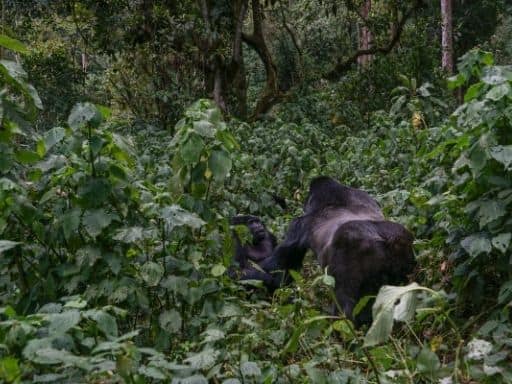
How Much Time Will I Spend With The Gorilla Families?
After successfully tracking a gorilla colony, you have a maximum of one hour to observe their interactions. While one hour may seem insufficient, you can make good use of this time by taking pictures and videos. However, don’t spend all your time behind the camera lens; you can learn more by watching these beasts in their natural habitats.
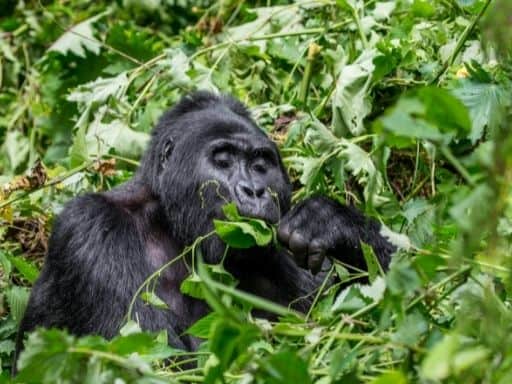
How Fit Should I Be For Gorilla Trekking?
Depending on the trail your scout chooses, finding the gorilla families can involve trekking through dense jungles for miles, crossing streams, and hiking over hilly terrains. Trekkers should have good levels of physical fitness to last through the trek. Normally, the scouts will divide trekkers into several groups based on age and level of physical fitness.
Throughout the trek, the guards will use their experience to assess how each member is coping, stopping for breaks and meals when necessary. We recommend carrying water and energy-rich snacks such as sandwiches, peanuts, and fruits in your backpack.
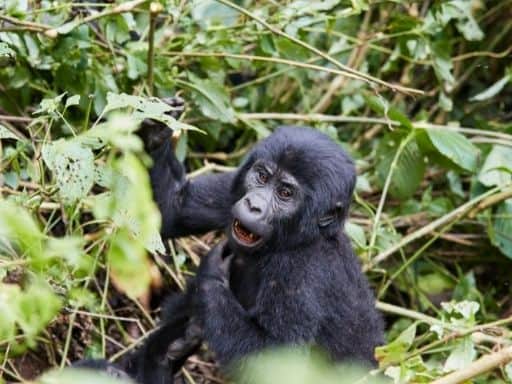
Where Can I See Gorillas In Uganda
Uganda offers one of the best gorilla trekking experiences on the continent. Besides Uganda, Rwanda and Congo are other habitats for the mountain and the lowland gorilla species. Uganda’s gorilla communities live within the Bwindi forest national park, a tropical rainforest that occupies the country’s southwestern part.
Besides the impenetrable Bwindi forest park, Mgahinga National Park is another gorilla habitat within the Virunga conservation area. The gorillas here regularly cross into the Democratic Republic of Congo (DRC) and Rwanda. Mgahinga park offers an exceptional gorilla trekking experience mainly because their habitat lies within densely populated farmlands.
The Bwindi forest reserve is accessible by road and charter flights. Traveling by road takes about 10 to 11 hours from the city capital; charter flights are much quicker and costlier. Bwindi is renowned for its rich montane and lowland forest, providing an excellent habitat for thousands of mammals, birds, reptiles, and butterfly species.
Income generated from park visits helps protect the endangered mountain gorillas whose existence is threatened by habitat loss and poaching. Bwindi is home to half of the world’s mountain gorilla population and thriving colonies of chimpanzees and colobus monkeys. The impenetrable Bwindi forest park boasts as many as four gorilla groups that are well accustomed to tourism.
Bwindi’s gorillas are somewhat different from other eastern gorilla species. The gorillas here lack brow hair which sets them apart from their Virunga counterparts.
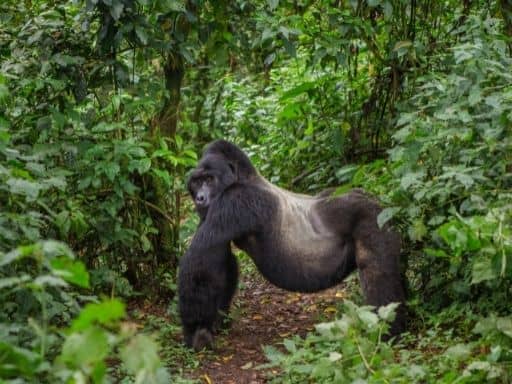
Best Time To Go To Uganda To See Gorillas
Though gorilla trekking happens all year round in Uganda, the best time to go trekking is during either of the two dry seasons. During the dry seasons, it becomes much easier for trekkers to comb through the forests and see gorillas than during wet seasons. Rain is a vital part of the rainforest ecosystems within the Congo basin.
The first dry season runs from mid-December to late February, while the second runs from mid-June to September. Despite being the most comfortable times of the year, forest floors are mostly muddy, hence the need to carry good hiking boots. Read our travel guide below for more information.
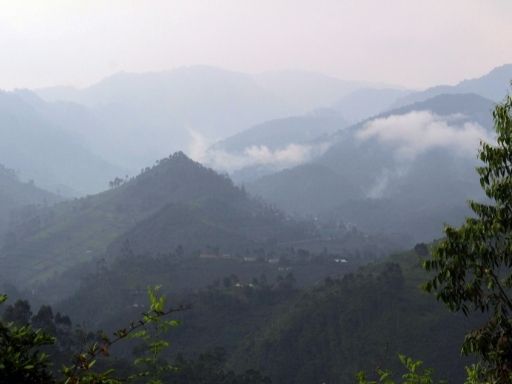
• January and February receive little to no rain, making them ideal for visiting the gorilla rainforests. The low season begins in January till late February leading to fewer crowds in the parks. You can take advantage of price discounts on the low season months.
• The wettest period runs from March to the end of May. The heavy rains can make most of the trek routes inaccessible. Besides the slippery slopes, the mountain gorillas also become more challenging to spot during the wet months. When visiting in the wet months, be sure to carry the appropriate gear to tackle cold and rain.
• The peak gorilla trekking season runs from early June to the end of August. It is also the best time to see gorillas in Uganda’s Bwindi rainforests. We recommend getting your peak season tickets and permits at least two months before they run out.
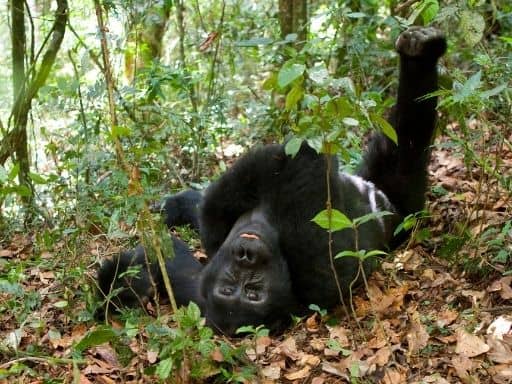
Gorilla Trekking Packing List
After months of planning for your African excursion, it can be challenging to decide what to carry for your safari. African safaris are somewhat unique compared to other trips around the world. Gorilla treks, in particular, entail traversing across mountainous regions and through dense misty forests to reach gorilla communities. Sometimes the trek can last for hours, depending on the gorilla family location.
To make the most out of your trip, we have put together the packing list below to guide you on what items and gear to carry for the gorilla trek.
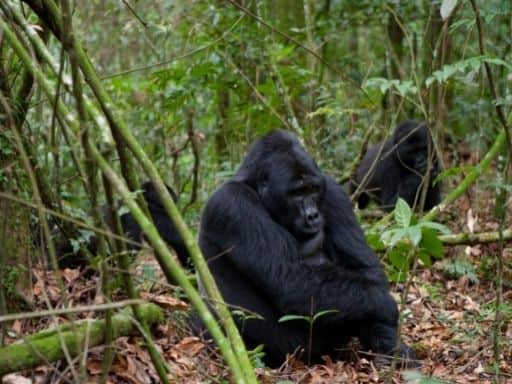
1. Passports, Travel Insurance, and Other Travel Documents
While it may seem obvious, passports and visas are mandatory for all visitors arriving in Uganda. You should also consider carrying travel insurance for your trip. Ensure you pack these items first to avoid traveling mix-ups at the airport.
You will also want to make sure you follow the latest COVID-19 testing requirements for entry into Uganda and come with your printed PCR test results.
Maybe the most important document for your trip, your gorilla trekking permit! This needs to be booked in well in advance because of the restrictions on the number of people allowed to engage with the gorillas each day. We recommend booking this as soon as you know your travel days.
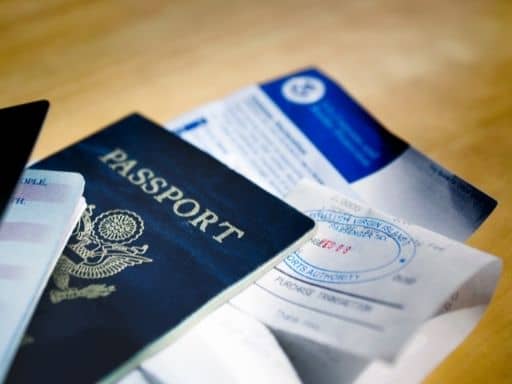
2. Clothing and Accessories
The gorilla trek is a fun, adventurous affair. However, the rainforest weather and altitude can be unpredictable with huge swings in temperature. With that in mind, it’s advisable to carry comfortable casual clothing that’s also lightweight and loose-fitting. When packing, be sure to include several pairs of long sleeve and short-arm t-shirts, comfortable shorts, cotton pants, a pair of sandals, sunglasses, raincoats, sturdy hiking boots, fleece jackets for warmth. It is worth considering ventilated clothing with fast-drying fabrics.
Check out our popular post on packing for Uganda for more ideas on what to pack.
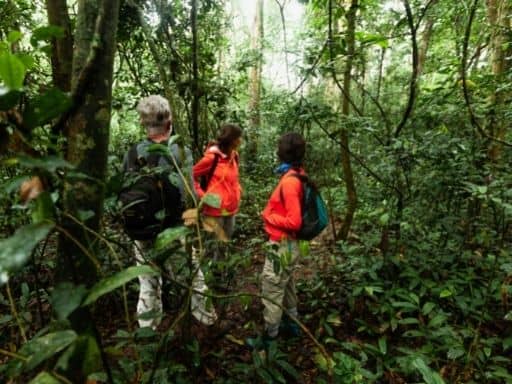
3. First Aid and Other Gear
Trekking through dense misty jungles can take its toll on travelers. Though most lodges, camps, and even safari vehicles provide basic first aid kits, it helps to pack your own supply of safety and hygiene essentials.
Your kit should include sunblock for hot afternoons, insect repellent, and antiseptic gel for disinfection. Consider packing a few meds in your backpack to be on the safe side. Headaches, mosquito bites, diarrhea, fever, nausea, and fatigue can strike at any time during your trek.
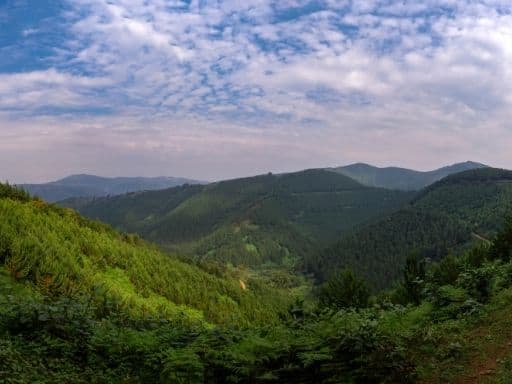
In your day pack, you should also consider packing the following items to enhance your gorilla trekking experience:
- Binoculars. Whether you’re on the lookout for gorillas or are trying to get a closer look at the hundreds of bird species, binoculars are a handy item to have with you.
- Gardening gloves. This can be helpful if you are grabbing trees and brush while trekking to the gorillas.
- Camera. Gorilla trekking is an experience you will want to share with everyone back home, so you don’t want to forget to carry along your camera. Just no flash photography!
- Water bottle. Hiking can be hard work, especially in a dense mountain rainforest. Carry enough water along for your excursion.
- High energy snacks. Like staying hydrated with water, you’ll also want to be sure you are energized throughout your hike. Pack some local snacks like peanuts or opt to carry your own energy bars in your day pack.
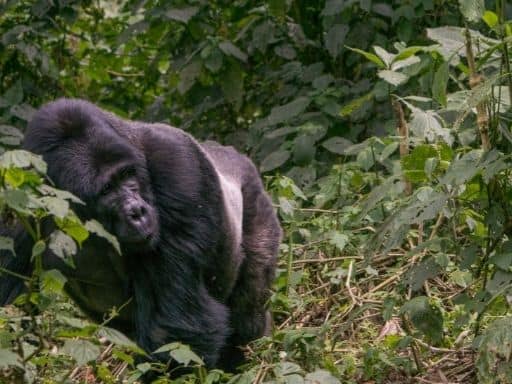
4. Support the Community
The local communities around and inside the wildlife reserve areas play a significant role in conserving mountain gorillas. Lodges, camps, and tour companies run initiatives to support these local communities. If you would like to support these initiatives, you can inquire from tour operators what supplies to include for the local community support.
One of our favorite initiatives is Gorilla Conservation Coffee. Proceeds from this coffee help to give farmers in Bwindi training as well as a market for their product. In turn, the income from Gorilla Conservation coffee prevents the farmers from entering Bwindi Forest illegally to hunt, and the gorillas are protected from disease and accidental ensnarement.

How Much Does Gorilla Trekking In Uganda Cost?
The total cost of gorilla trekking in Uganda greatly varies depending on the time of the year, traveler country of origin, traveler age, and the number of visitors. The permit cost accounts for the largest share of park fees and is mandatory for anyone interested in gorilla trekking.
Gorilla trekking offers one of the most thrilling wildlife encounters on the planet. As a result, the cost of gorilla trekking is generally higher than most other wildlife encounters.
Gorilla conservation efforts often involve many stakeholders from local communities, park rangers, researchers, and scientists. Proceeds from gorilla permits are often split among the government, local communities, and gorilla conservation. The high permit fees help keep the conservation running while also limiting the number of visitors to benefit the habituated gorilla families.
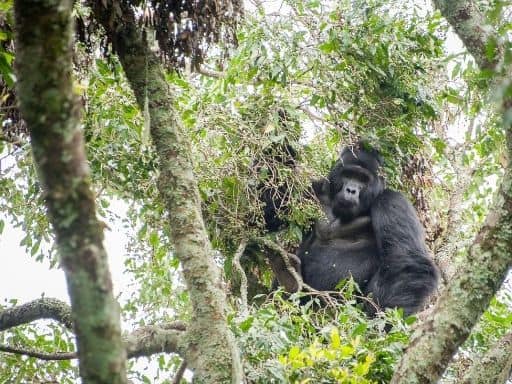
Gorilla Trekking Permit Costs
Foreign non-resident tourists will pay $700 per individual for a one-hour interaction with Uganda’s mountain gorillas. Foreigners residing in Uganda pay $600, while east African citizens pay 250,000 UGX for a gorilla permit. The price is mostly constant all year round but can vary depending on ticket demand.
You can pay for your permit through the Uganda Wildlife Authority’s website. Alternatively, when you travel with a tour company, they can make all of the arrangements and payments for you.
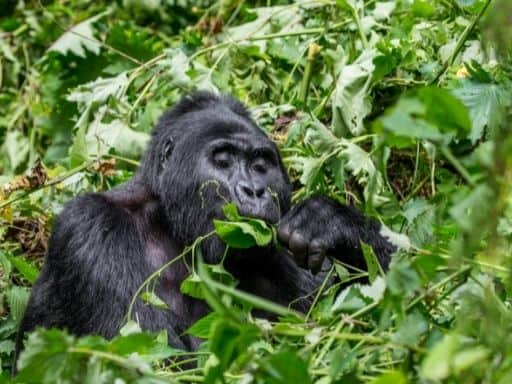
Gorilla Habituation Experience
There’s also a gorilla habituation experience permit for $1,500 for foreign non-residents, $1,000 for foreign residents, and UGX 750,000 for East African residents. The habituation permit allows trekkers to venture out in the company of researchers and increases the interaction time with gorillas from one hour to four hours.
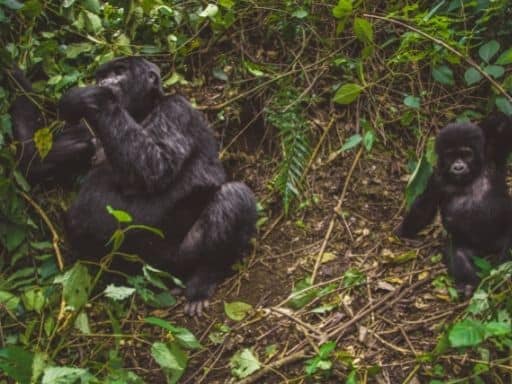
Should I Use A Porter For Gorilla Trekking?
We highly recommend engaging a porter for your gorilla trek, even when familiar with the terrain. Porters are, in most cases, reformed poachers who have joined the conservation movement to protect gorilla communities. For around twenty dollars, you’ll be helping local communities earn a living.
Without such opportunities to earn income, many porters will be forced to resume hunting gorillas for bushmeat and the illegal wildlife black market. With a limited way to earn a living, impoverished villagers find it difficult to turn down lucrative offers from poachers. The best way to improve gorilla conservation efforts is by accepting the porters’ help and paying the scouting fees.
Top Tour Companies For Gorilla Trekking In Uganda
There are a number of tour companies in Uganda that offer packages for gorilla trekking. We have always enjoyed the tours organized by Northern Nature Safaris.
James and his team have great relationships with many of the businesses, community groups, and rangers throughout Uganda’s national parks. This on top of their great service, friendliness, and expert knowledge and passion about Uganda and wildlife make for an unforgettable experience!
We also recommend checking out:
Laba Africa Expeditions
You can learn more about their Bwindi excursions and book your trip here.
Northern Fox Adventures
Check out their Bwindi adventures and book your trip here.
Is Gorilla Trekking Safe?
This is a question many people ask before spending the money to do it. The Uganda Wildlife Authority (UWA) and Bwindi Impenetrable Forest (BIF) have strict rules in place to ensure the safety of both trekkers and gorillas.
The UWA requires that all trekkers have a valid permit, which can be obtained through a registered tour operator. Trekkers must also undergo a health check and provide proof of travel insurance. They must also agree to follow the rules set by the UWA, which include not smoking, eating, or drinking in the presence of gorillas, and staying at least seven meters away from them at all times.
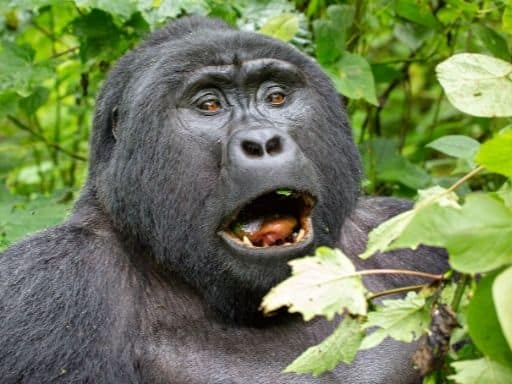
The BIF has its own set of rules that trekkers must follow. These include not making any loud noises, not touching the gorillas, and not using flash photography.
Trekkers who follow the rules set by the UWA and BIF are very unlikely to be injured while gorilla trekking.
Gorilla trekking is an incredible experience that is safe for both trekkers and gorillas. By following the rules set by the UWA and BIF, you can ensure that you have a safe and enjoyable trekking experience.
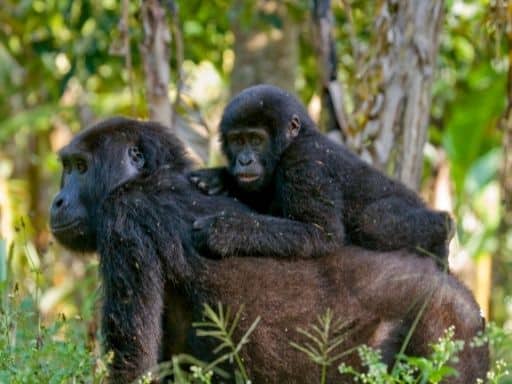
Can I Touch The Gorillas?
While it’s understandable to want to reach out and cuddle adorable gorilla babies, game rangers advise against touching these magnificent mammals. Being wild animals, gorillas can be unpredictable, and their immense strength can put you at risk of injury.
Gorilla populations have been dwindling due to logging, poaching, and habitat loss from human encroachment. Keeping a safe distance protects both gorillas and humans from risky interactions.
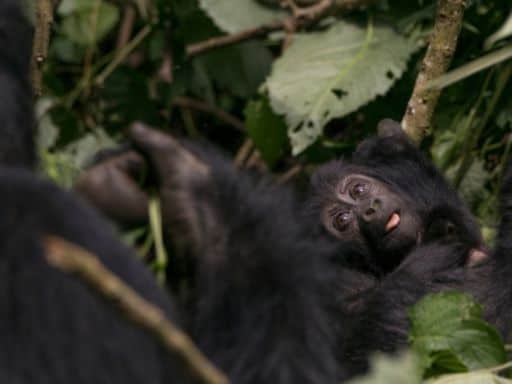
More importantly, because gorillas and humans share an almost similar genetic makeup, they are at risk of contracting certain human illnesses. It’s important to keep a safe distance of at least ten meters at all times.
In some instances, rangers may recommend wearing face masks. What’s more, the park officials often restrict sick travelers from taking the gorilla trek. Travelers should be in good health and take necessary precautions to prevent illness while on the trip.
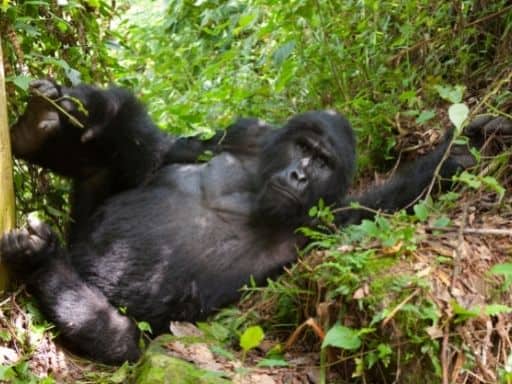
How To Get To Bwindi Impenetrable National Park
Bwindi Impenetrable National Park is a national park located in southwestern Uganda. The park is situated between the towns of Kabale and Kisoro, approximately 30 miles (48 km) north of the Equator.
The park can be accessed by road or air. By road, the park is approximately 10 hours from Kampala, Uganda’s capital city. By air, there are daily scheduled flights from Entebbe to Kisoro Airport, which is located just outside the park boundary.
Flying to Bwindi
If you’re looking to visit Bwindi Impenetrable National Park in Uganda, the best way to get there is by flying with Aerolink. They offer direct flights from Entebbe International Airport to Kihihi Airport, which is just a short drive from the park.
Aerolink operates daily flights to Kihihi, with three departures times. Flights depart Entebbe at 7:00am, 10:15am, and 12:00pm. The mid morning flight does not fly during the low seasons of April, May, and November. The flight time is approximately 1 hour and 45 minutes.
Fares between Entebbe and Kihihi are $256 for a one way ticket, or $231 each way if you book round trip. You can book your flight directly on Aerolink’s website.
Once you arrive at Kihihi Airport, there are a few different options for getting to Bwindi Impenetrable National Park. You can either take a private taxi, arrange for a pick up through your hotel or lodge, or have your tour operator pick you up from the airstrip.
Once you arrive at the park, you’ll be able to explore all that this incredible natural wonder has to offer.
What’s Next
After you’ve trekked through Bwindi Impenetrable Forest or Mgahinga National Park, consider stopping at the near by Lake Bunyonyi for a relaxing retreat, or Lake Mburo for a safari at Uganda’s smallest national park before heading back to Entebbe.
If you’re looking for another big opportunity to see some of Uganda’s incredible wildlife, we highly recommend checking out Kidepo Valley National Park or Murchison Falls National Park.
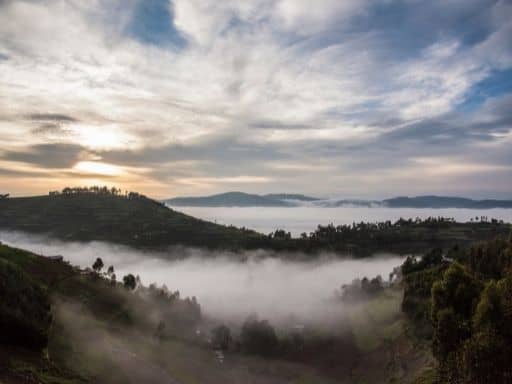
The Wrap-Up: Is Gorilla Trekking Worth The Money?
If you’re considering a trip to Africa to see gorillas, the answer is yes – gorilla trekking is definitely worth the money. Not only is it an amazing experience to get up close and personal with these creatures in their natural habitat, but it’s also a great way to help support conservation efforts and protect the species.
